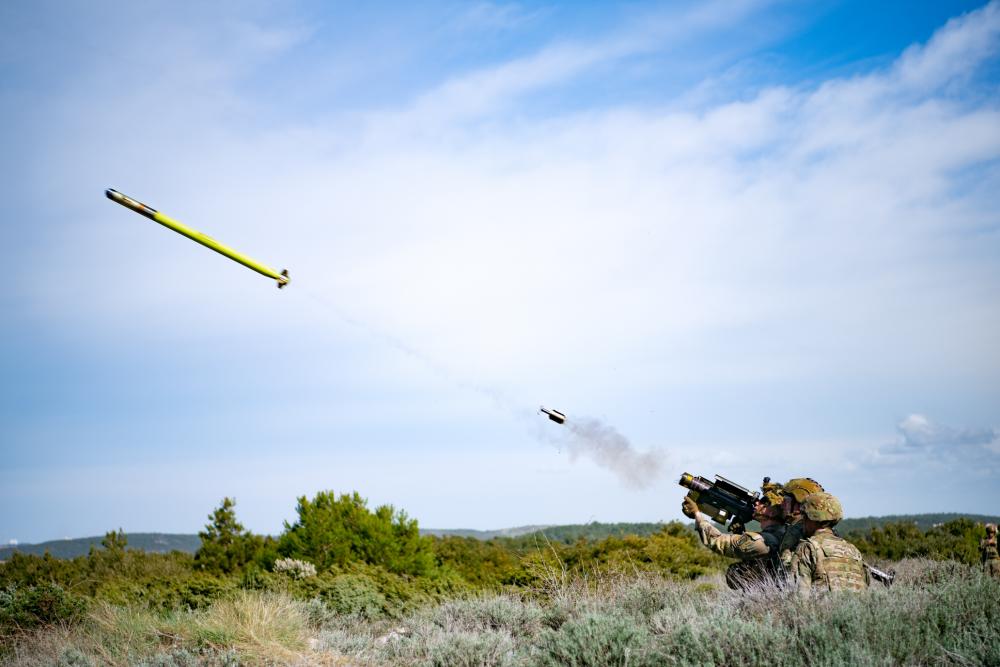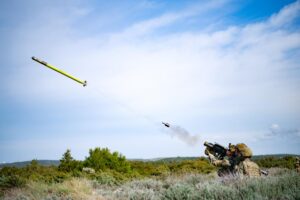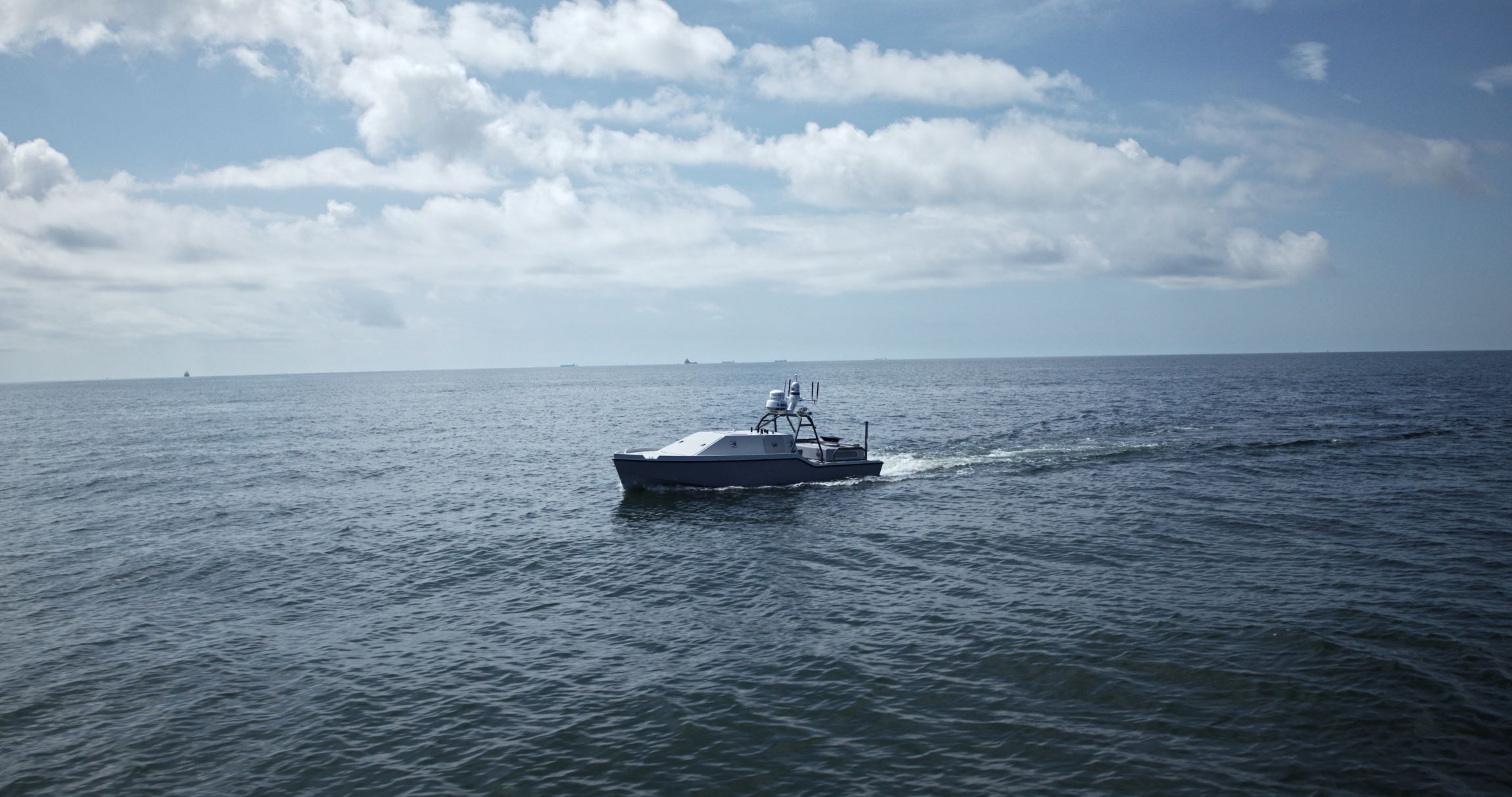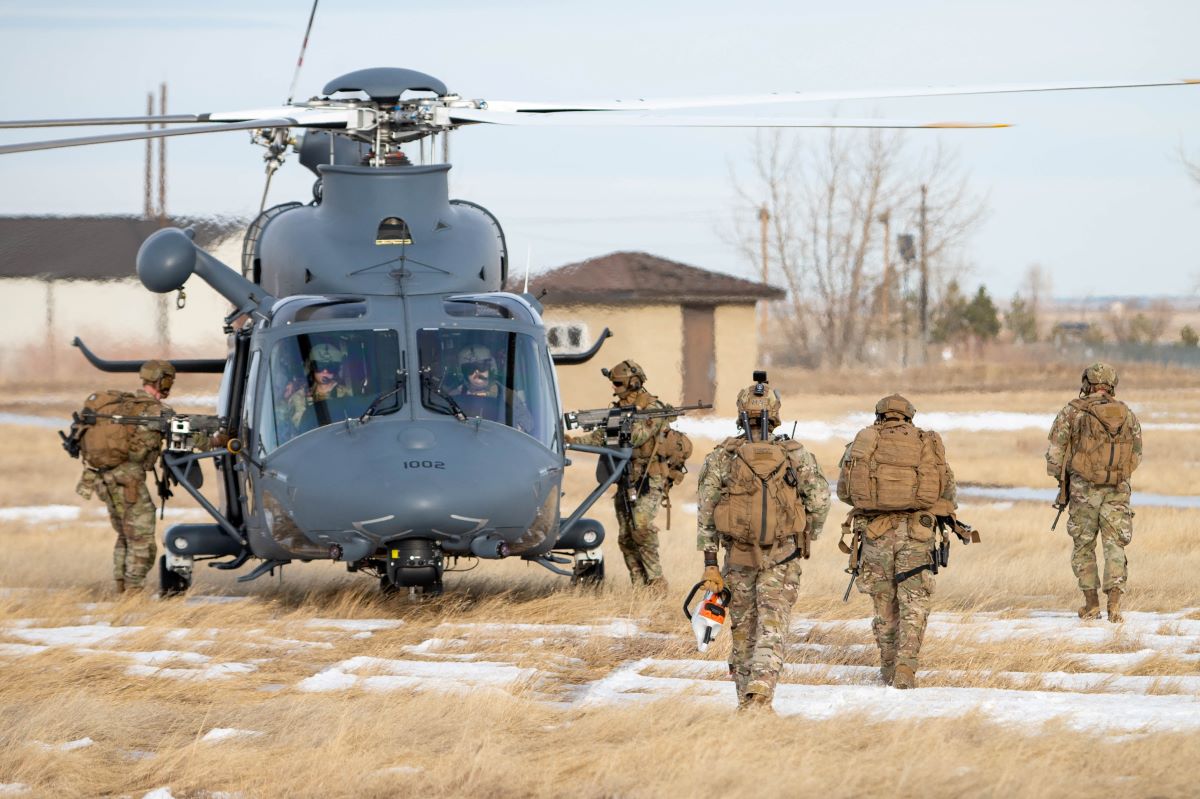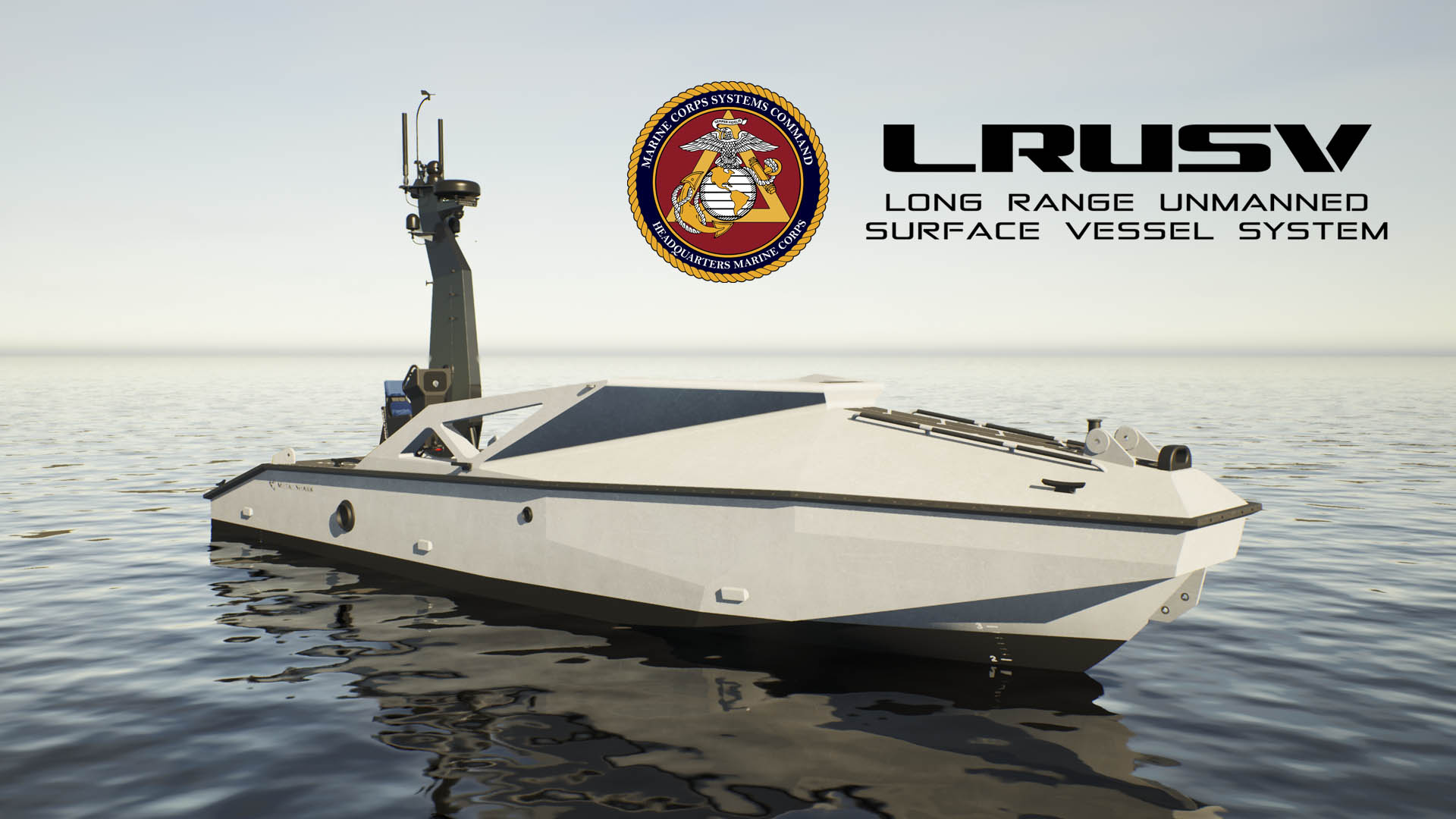Unmanned Help. As the Navy has reduced its assets in U.S. Southern Command’s operational area, the service has introduced more Saildrone unmanned surface vessels, which are providing “great domain awareness” in the Caribbean Sea and Eastern Pacific Ocean, Adm. Alvin Holsey, commander of SOUTHCOM, said last week. Saildrones, combined with other unmanned assets in the region, helps make up for the manned assets and are “making a difference for me,” he told the Senate Armed Services Committee. Surveillance data obtained by the Saildrones is piped back to the U.S. Navy’s Southern Command in Florida, he said. Currently, eight Saildrones are operating in the Caribbean and three in the Eastern Pacific, and in the “next couple days” there will be 20 in the region, he said.
Hypersonic UAS Collab.
Cummings Aerospace and ATRX last week agreed to collaborate on the development of affordable supersonic and hypersonic unmanned aircraft systems (UAS) for defense and space applications. The companies will integrate ATRX’s Air Turbo Rocket into a new version of Cummings’ Hellhound UAS it is designing to accommodate a hypersonic-capable engine. Cummings said that Hellhound offers affordability due to its 3D-printed modular design and commercial off-the-shelf hardware. Hellhound also allows for payload swaps in less than five minutes with no tools required.
Metal 3D Printing. Specialty metals producer and forger ATI last week commissioned its Additive Manufacturing Products facility in Margate, Fla., a vertically integrated plant for large-format metal 3D printing. “In this new facility, we’ve brought our materials science and forging expertise together with additive manufacturing acumen, delivering high-quality production at scale,” Kimberly Fields, ATI’s president and CEO, said in a statement. “From design to finished product, we’ve formed a powerhouse that solves our customers’ most difficult challenges for the most demanding markets—aerospace, defense, and space.” ATI’s first contract at the facility is with Bechtel Plant Machinery to produce “highly engineered part solutions in support of the U.S. Naval Nuclear Propulsion Program.”
Space Expansion. The Texas Space Commission has awarded an $8.2 million grant to Firefly Aerospace to expand the company’s spacecraft manufacturing facilities in Central Texas, to include an additional 5,600 square feet of ISO-8 cleanroom space, more ground support and test equipment, a spacecraft pressure proof test facility, and upgraded information technology infrastructure for mission operations and labs. Firefly also expects to add 50 new jobs.
Efficient Chips. Startup computer chip developer Encharge AI has raised $100 million in an oversubscribed funding round led by Tiger Global with participation from In-Q-Tel and RTX Ventures, among others. The Silicon Valley-based company is developing analog in-memory-computing artificial intelligence chips that it says require 20 times less energy to run AI workloads versus current leading AI chips. The new funding will be used to bring Encharge AI’s first AI accelerator solutions to market and in configurations to meet customer needs, including aerospace and defense.
Battery News. Lyten, which is developing and manufacturing lithium-sulfur batteries, has signed agreements with California Sulphur Company, and another at California’s Port of Stockton, to supply domestically sourced, industrial-grade sulfur to the company’s manufacturing facilities in California and Nevada. Lyten is using sulfur, which is locally sourced, to replace minerals such as nickel, manganese, cobalt, and iron used in current batteries to eliminate reliance on global supply chains dominated by China. Lithium-sulfur batteries are an alternative to lithium-ion batteries, weigh dramatically less, offering improved cost and range benefits for a range of aerospace and defense uses such as satellites and drones.
Land Leg. Former DoD acquisition chief William LaPlante rescinded the Engineering and Manufacturing Development (EMD) decision for the Northrop Grumman LGM-35A Sentinel ICBM last July after a Nunn-McCurdy breach, and the U.S. Air Force said this week that it has suspended “the design, testing, and construction related to the Command and Launch Segment.” The Trump administration has nixed Biden administration directives and decisions, so is it possible that the new White House will do the same on Sentinel, which got the okay for EMD in 2020 during Trump’s first administration? Important work lies ahead for Air Force Brig. Gen. William Rogers, the program executive officer for ICBMs–a position created last April under the Biden administration as part of then-Air Force Secretary Frank Kendall’s “re-optimization for Great Power Competition.” Before he became PEO/ICBMs last year, Rogers was the Air Force Life Cycle Management Center’s PEO for bombers.
PrSM Test. The Army on February 12 successfully conducted two engagements with its new Precision Strike Missile (PrSM) Increment 1 during a flight test at White Sands Missile Range in New Mexico. “Both PrSM Increment 1 missiles, travelling the predicted range and trajectory, engaged multiple targets, including a surrogate SCUD missile, radar and rotary wing platforms,” the Army said in a statement. “Both PrSM Increment 1 missiles performed nominally for range, time of flight, accuracy, and height of burst.” The Lockheed Martin-built PrSM is the Army’s program to replace its legacy ATACMS missiles, with the base weapon capable of reaching ranges up to 500 kilometers. The recent flight test at Yuma Proving Ground follows a Limited User Test with PrSM Inc. 1 missiles at White Sands Missile Range in December.
DroneShield AUKUS. Australia’s DroneShield counter-drone company on Feb. 13 announced it had registered under AUKUS in both the U.S. and Australia to allow export of most of its military and dual-use goods, technologies and services to the U.S. and U.K. without requiring an export license. The company underscored this kind of agreement streamlines trade, reduces administrative barriers and accelerates capability delivery.
SSC Engines. The Navy awarded Rolls-Royce a $167.38 million contract on Feb. 7 to produce 40 MT7 turboshaft engines for the Ship to Shore Connector (SSC) Landing Craft Air Cushion 100-class craft. This includes ancillary parts, installation kits and a portable test tool inspection. The award includes options that, if exercised, would raise the total value to $167.7 million. Work will occur at the company’s Indianapolis, Ind., facility and is expected to be finished by June 2028. If options are exercised, work will last through December 2028.
T-AO 189. Military Sealift Command (MSC) awarded South Carolina’s Detyens Shipyards Inc., a $21.15 million contract on Feb. 10 for the 180-day availability for the regular overhaul and dry dock availability of MSC’s USNS John Lenthall (T-AO 189) fleet replenishment oiler. The contract includes a base period with four option periods, which if all exercised would raise the total value to $21.78 million. Work is expected to be finished by September 2025. This award came as a small business set-aside with proposals solicited via the Government Point of Entry website with three offers received. As usually, the government did not detail the other offerors.
Acoustic Facility. Naval Surface Warfare Center Panama City Division (NSWC PCD) conducted a ribbon-cutting ceremony for its new Acoustic Test Facility and Instrumentation building on Feb. 5, the Navy announced Feb. 12. The new building was possible based on a concept from personnel in 2012 and the 2022 demolition of a former building. They broke ground on this 1,400 square foot facility in 2023. The Navy aims to use the facility to provide instrumentation, data acquisition, and electronics staging areas, supporting the NSWC PCD Acoustic Test & Calibration Pier Service Cost Center. The division said this will allow the Navy lab’s team to develop and test advanced sensors, systems, payloads and platforms for subsea and seabed warfare and mine warfare missions.
Bomber Task Force. U.S. Air Forces Europe and Air Forces Africa said on Thursday that B-52H Stratofortress strategic bombers “arrived in Europe as part of a routine Bomber Task Force-Europe deployment, underscoring the U.S.’ shared commitment to regional security and NATO’s collective defense.” The bombers conducted a “routine mission” with France, Sweden, and Finland and are to participate in exercises and training events with allies, officials said.
Budget Blueprints. Both the Senate and House Budget Committees this week advanced their respective chamber’s budget resolution proposals that each set a blueprint for passing Trump administration priorities via the reconciliation process. The Senate Budget Committee first voted 11-10 on February 12 to move its proposal with $150 billion for defense toward full floor consideration. “The Department of Defense will receive $150 billion at one of the most dangerous times in world history, and energy reform is coming. These initiatives will be fully paid for because we will find cuts and other programs to offset the cost of border security and a stronger military,” Senate Budget Committee Chair Lindsey Graham (R-S.C.) said in a statement. A day later, the House Budget Committee approved advancing the lower chamber’s proposal with $100 billion for defense by a 21-16 vote. “The resolution passed out of Committee today is a blueprint to right-size the bloated federal bureaucracy, rein-in the reckless spending that spurred record inflation, and roll back the barrage of burdensome regulations that are crushing our small businesses,” House Budget Committee Chair Jodey Arrington (R-Texas) said in a statement. A next step will likely involve the House and Senate GOP reaching a compromise between their two proposals.
155mm Ammo. The Army will host an industry day on March 20 and 21 in Parsippany, N.J., to discuss continued efforts to expand and accelerate production of 155mm artillery shell production. “The industry day will inform the industrial base on the status of 155mm munition expansion and potential new U.S. Army requirements to expand production and accelerate delivery of 155mm projectiles and ancillary equipment,” the Army wrote in a notice. The event is specifically expected to cover the current status of the Army’s 155mm shell production push, efforts to accelerate production of artillery propellant charge systems, industrial base investments into explosives and raw materials, munition innovation efforts, modernization of government-owned, contractor-operated facilities and opportunities with NATO, according to the notice. The Army is currently working toward a goal of boosting 155mm artillery shell production up to 100,000 rounds per month by late 2025.
SecArmy Nom. The Senate Armed Services Committee on February 11 advanced Dan Driscoll’s nomination to be the next secretary of the Army. Driscoll’s nomination now heads to the floor for full Senate consideration. The 38-year-old Driscoll, an Army veteran who has worked in investment banking and venture capital, would likely be one of the youngest officials to ever serve in the role. During his confirmation hearing, where he seemed to have bipartisan support for his nomination, Driscroll said the Army must improve “as a customer.”

